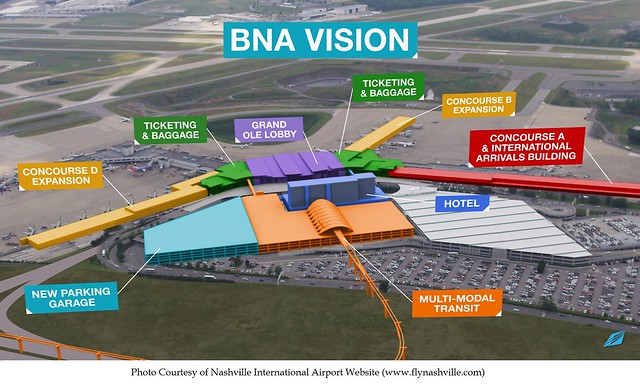
Though riding in an airplane may not seem like much of a marvel to some of us today (though I still love it), it's still a wonder to learn how modern aviation technology has come so far to become one of the main forms of transportation. Over 100 years ago, aviation was still in its infancy and developed a little more rapidly thanks to both World Wars. You could say it sky-rocketed from there...haha, good pun, right?! I thought so.
Well, if aviation is something that marvels you, you might also enjoy learning that Nashville provided a few famous firsts in the sky's-the-limit field. Where can you learn about this? Metro Archives of course. Starting March 28th through the end of May, Metro Archives will be exhibiting "Aviate, Navigate, Communicate: A History of Aviation Advancement in Nashville" in the West Reading Room. The exhibit kicks off with a small, opening reception on Wednesday, March 29th.
A few things that you will find in the exhibit:
- Nashville owns the milestone of delivering the first mail via flight/airmail. Though the pilot that achieved this milestone was never aware of it, most likely. It was discovered about 50 years later. And you know what, the "airmail" in question was not delivered in an airplane either. It came by a balloon by the name of the "Buffalo." The voyage began on June 18th, 1877, from the corner of Broadway and Spruce in downtown Nashville. Captain of the ship, Samuel Archer King, took off with his 6 passengers, and a small stack of letters bearing an adhesive stamp printed for the occasion, heading northeast towards Gallatin. On the first day, they only made it as far as the outskirts of Edgefield (East Nashville today) due to a thunderstorm that sprung up. King and his associate, plus another passenger continued their journey the following day to Hartsville and then Lebanon. The stamp created for this specific journey was the “Buffalo Stamp”. It was privately produced and not sanctioned by the US Postal Service. 300 of the $.5 stamps were created by Wheeler Brothers of Nashville, although only 23 were used as air postage on the flight.
- Prior to the Wright Brothers' historic flight at Kitty Hawk (1903), Nashville had its fair share of inventors and dreamers of flight. For example, Prof. Arthur Barnard - a YMCA instructor and lover of bicycling - built a device using a bike-pedal-propelling system with a 46-foot-long dirigible structure filled with hydrogen gas. He debuted his device on May 6th, 1897, pulling it from his barn-like structure located where Centennial Park is located now. With his legs pedaling, his aircraft began to move forward and off the ground. He reportedly “turned west and disappeared from view.” When the evening winds changed, he headed back east, and was eventually found that night at his home in East Nashville.
- Female pilots also found themselves testing the Nashville skies. Though women weren't traditionally accepted as pilots, that didn't stop people like Amelia Earhart and Katherine Stinson. Katherine Stinson was the 4th American woman to hold a pilot license from the prestigious Federation Aeronautique Internationale and the nation’s first female airmail pilot. Her nickname was "the flying schoolgirl." Stinson came to Nashville on Nov. 17th, 1914 for an exhibition where she was flying a Wright model “B” airplane and performed many demonstrations with her airplane, including racing her sister who was driving a car. Years later, Aviatrix Amelia Earhart came to Nashville (in 1931) to demonstrate an autogyro. What's an autogyro, you ask? I don't think I could properly explain it, so my best advice is to just google it. But I can say that she was in Nashville for a week giving joyrides to interested individuals.
- Have you ever asked what does the "B" stand for in "BNA" when referring to the Nashville International Airport? I know I have, and in my defense, I'm hoping that question was asked before the smartphone and Internet existed (doubtful though). So those of you interested and don't want to just Google it, the "B" in Nashville's IATA (International Air Transport Association) code stands for "Berry Field" or "Berry Field Nashville" - the airport's original name when it officially opened in 1937. If you come check out the exhibit, you can learn a little more about the airport and how it has progressed to what it is today. But I will tell you that the namesake of the airport came from Colonel Harry S. Berry, the State Administrator for the Works Progress Administration (WPA) - the organization that headed the project of the airport. Though Berry's main task as the State Administrator of the WPA was to improve rural roads in every county of the state, his work and interest in aviation is what's mostly remembered.
Come learn a little more about Nashville's history of aviation and check out the rest of the exhibit in Metro Archves, starting March 28th and running through May 31st.





